There are plenty of reasons why Vienna is now the world’s most liveable city of 2018! With clean, wide boulevards, an efficient transportation system, pleasant sights and large green spaces, it’s hard not to fall in love with this dream city lifted straight from the pages of a fairytale. But if you’re really in need of more convincing, here are ten reasons why you have to visit historic Vienna!
1. It’s home to the world’s most famous cake — the Sachertorte
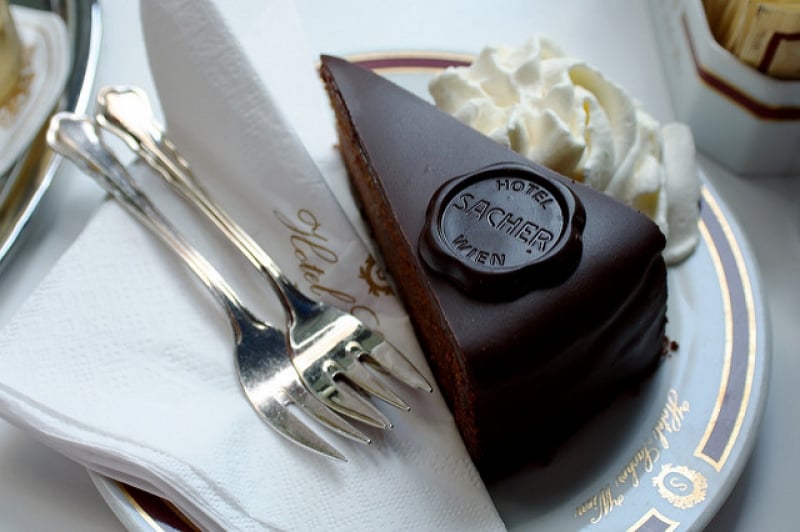
Image credit: Matthew and Heather
Invented in 1832, the legendary Sachertorte comprises layers of dense chocolate cake and apricot jam, served with a side of unsweetened whipped cream. Enjoy a slice of this heavenly confectionery with a cup of Wiener Melange (“Viennese blend”) at the Café Sacher of the five-star Sacher Hotel, where the cake is still made by hand following the original, closely-guarded recipe.
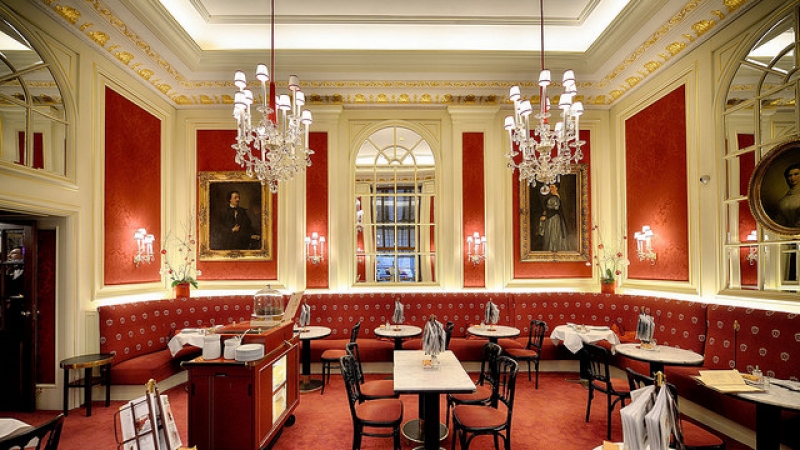
Image credit: Yuan
If the opulent interior of the Café Sacher is anything to go by, the Viennese take special pride in their Kaffeehäuser, or coffeehouses. They are establishments made to luxuriate in; savour Viennese confectioneries under the cathedral-like vaulting of Café Central, or in the congenial atmosphere of Café Sperl, with its dark wooden furnishing and billiard tables.

Image credit: Patrick Vierthaler (left), CpaKmoi (right)
Viennese coffeehouses are also dessert wonderlands — step into the famous Café Demel and be drowned in saccharine sweet delight, as rows upon rows of cakes, pastries and chocolates are stacked high behind gleaming glass displays.
2. If music be the food of love … then feast yourself in Vienna

Image credit: Patrick Vierthaler
Vienna holds a considerable reputation for being the music capital of the world. Indeed more great musicians — including Mozart, Salieri, Schubert, Haydn and Vivaldi, among others — have called Vienna home than any other city on the planet. The presence of music is palpable all around the capital, with places like the Mozarthaus, Arnold Schönberg Center and Museum of the Johann Strauss Dynasty keeping this august legacy of music alive.

Image credit: Roman Boed (left), Lorenz Seidler (right)
Of course, music is always on the menu in Vienna; every year, the Vienna Philharmoniker and Symphoniker offer highly anticipated concerts in various locations across the capital. Among the most awaited include the annual Summer Night Concert, a free open-air event held in the lush grounds of the Schönbrunn Palace park. On ordinary days though, performances are conducted in the stunning interiors of the Musikverein and Konzerthaus.
3. You can Fiaker your way through Vienna’s imperial past

Great Houses are the movers and shakers of history — in Game of Thrones, yes, but also in the real world. With an empire that extended over large parts of Central Europe, the House of Habsburg maintained royal control for seven centuries (!!) from their ruling seat in the Austrian capital. The Hofburg remains one of the largest palace complexes in the world, comprising several wings built, and so designed, in various architectural styles dating from the 13th to the 20th century.
Fun fact: the Habsburgs’ motto is abbreviated as A.E.I.O.U., and translates as “All the world is subject to Austria”. Talk about world-dominating ambition!
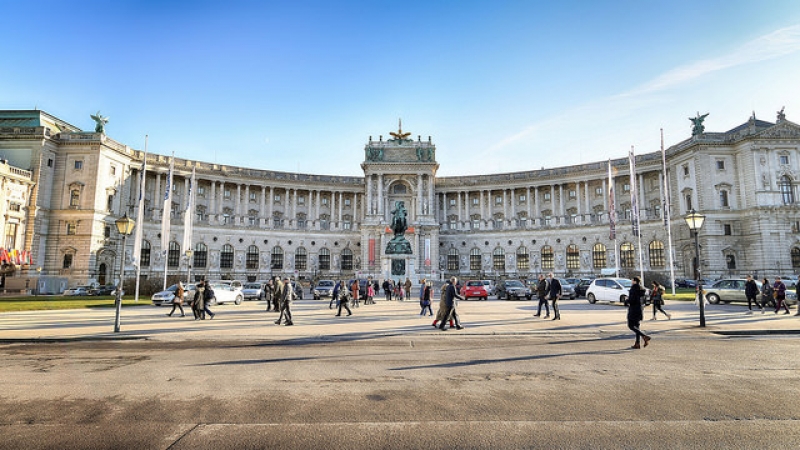
Image credit: Yuan
Explore the expansive palace grounds on a Fiaker, a traditional horse-drawn carriage, with drivers doubling also as guides through the Hofburg. Notable photo opportunities include the Neue Burg section (above), as well as Michaelerplatz and Josefsplatz. Hop off the Fiaker and check out the Hofburg’s many attractions, including the Imperial Apartments, the Sisi Museum dedicated to the famed Princess, the Imperial Treasury, and the Spanish Riding School.
4. It also houses one of the most beautiful libraries in the world
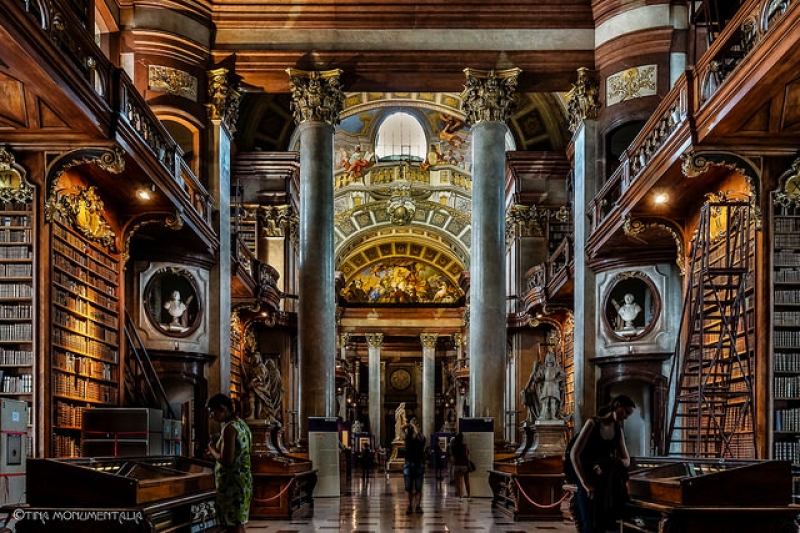
Image credit: Tine van Voorst
While famous libraries like the Old Library at Trinity College Dublin may exude a measured solemnity, the Österreichische Nationalbibliothek, or Austrian National Library, boasts pomp and opulence. Indeed, the interiors of the State Hall are a particularly fine example of the Library’s lavish Baroque style.
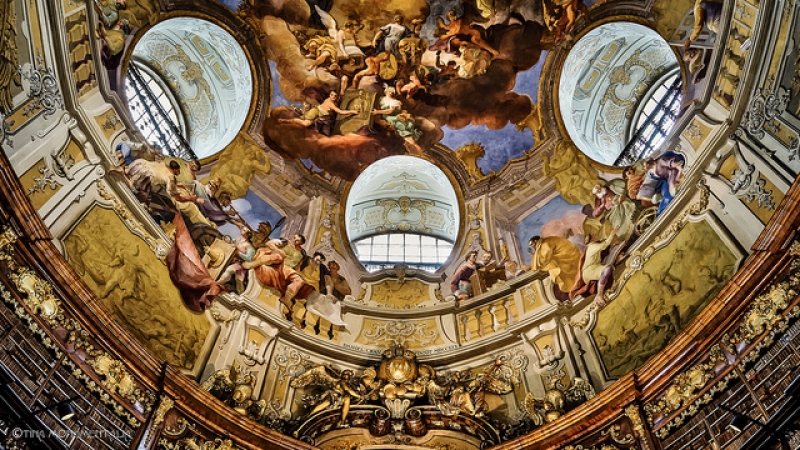
Image credit: Tine van Voorst
Follow the trail of books and gaze upwards at the frescoes decorating the magnificent cupola of the Library. Seen in an afternoon’s soft light diffused among statues, historical maps, manuscripts and globes, this Library is certainly a fitting legacy for one of Europe’s great royal houses.
5. There’ll be no sadness at this summertime residence
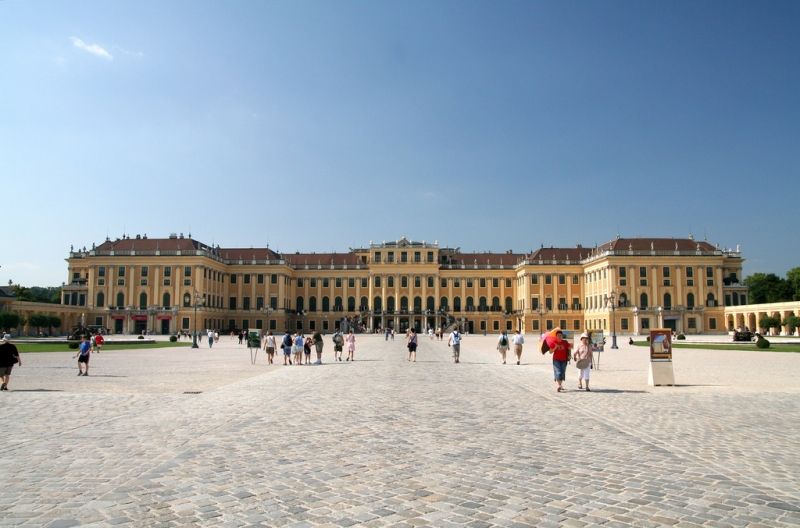
Image credit: Kevin Bovard
Perhaps the most-visited attraction in Vienna, the Schönbrunn Palace is the former imperial summer residence of the Habsburgs, and is arguably the most important historical monument in Austria. Upon entering, its cheery yellow facade greets visitors with relative simplicity, but what awaits inside is an unparalleled extravagance bedecking the palace’s rooms — all 1,441 of them. A guided tour allows you to visit 45 of these impressive imperial interiors.
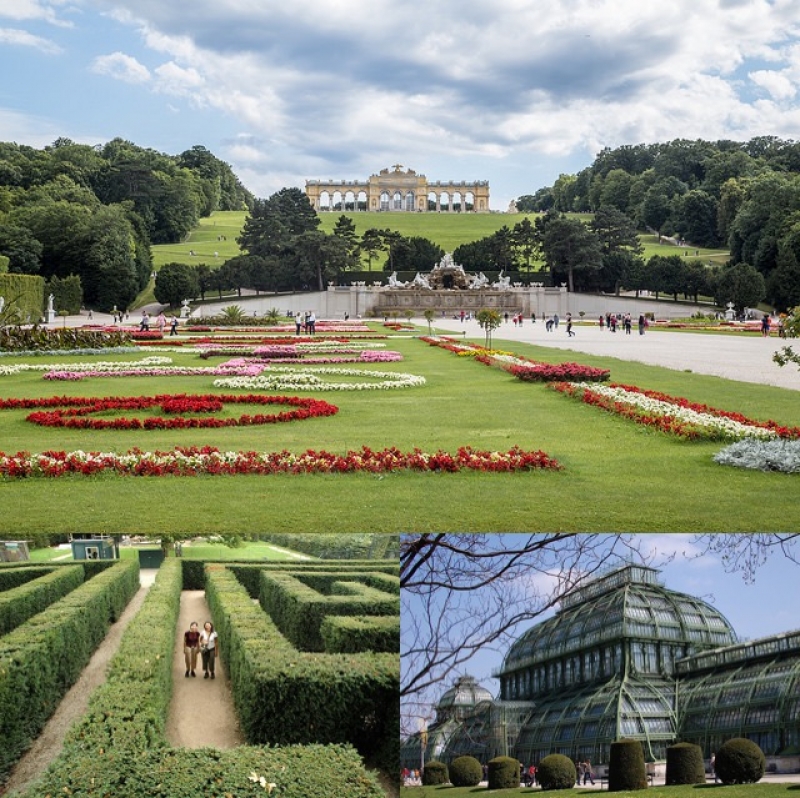
Image credit: Mike Clegg (top), Tania and Artur (bottom left), Andrew Luter (bottom right)
Even without a guided tour, there is enough to see and do on the sprawling palace grounds to keep you occupied for a long summer afternoon. Walk through the charming parterres and up to the Neptune Fountain and the Gloriette (above) — the latter offers a great vantage point from which to view the entire palace complex and beyond. The Schönbrunn also boasts a small garden Maze and even a former menagerie, now turned into a Zoo.
6. The historic Prater amusement park promises pure fun!
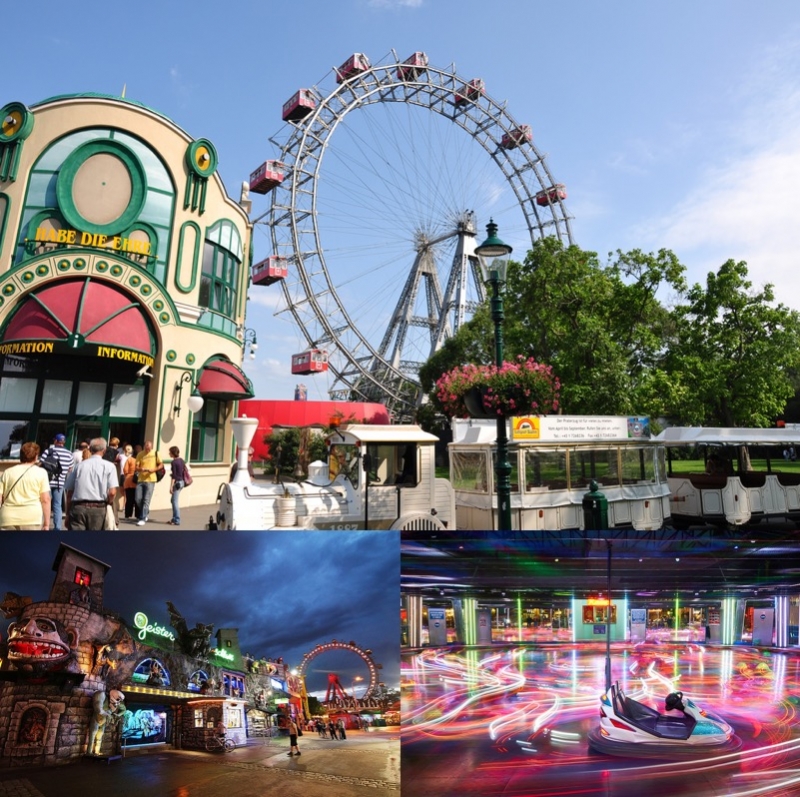
Image credit: Francisco Antunes (top), Nicu Buculei (bottom left), Nico Kaiser (bottom right)
Vienna is not all gilded flamboyance; there’s everyday family fun too at the Wurstelprater, or simply the Prater, an amusement park that stands on former imperial hunting grounds. Its most iconic landmark is perhaps the Wiener Riesenrad, a Ferris wheel with stunning views of the Danube and the city.
Otherwise, the Prater is a fairground complex with an assortment of attractions that are open daily from March through October. Hungry after all that fun? Be sure also to visit the Schweizerhaus, a famous traditional Viennese restaurant particularly known for its pork knuckles.
7. There’s world-class opera for €3 at the Vienna State Opera
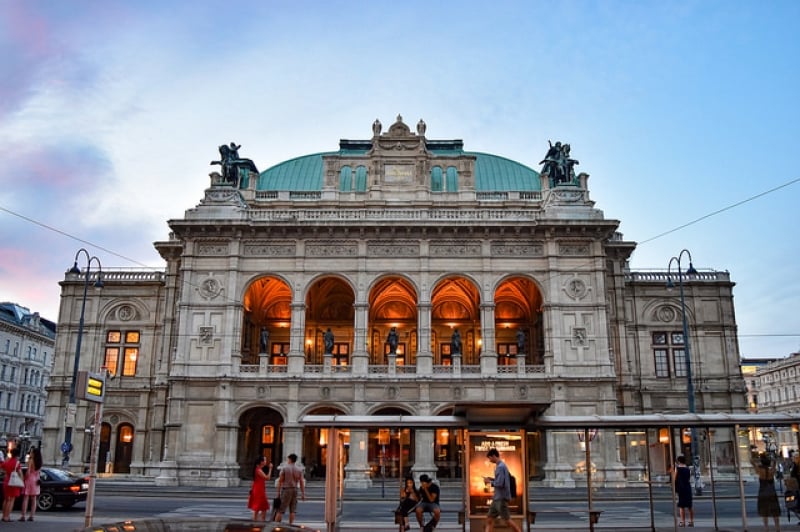
Image credit: Gwendolyn Stansbury
Standing before the Sacher Hotel is the Wiener Staatsoper, or the Vienna State Opera. Completed in 1869, it was initially met with great distaste, with some nicknaming it the “stone turtle”. Today, it remains one of the world’s busiest opera houses, with top-notch performances staged nearly every day of the week!
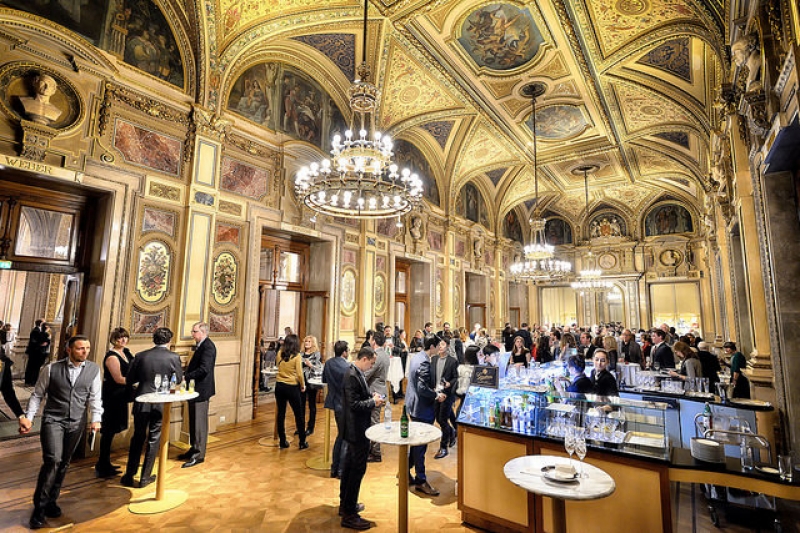
Image credit: Yuan
Haven’t gotten a ticket to the night’s performance? Fret not; book yourself a guided tour that takes visitors through the palatial interiors of the Staatsoper. Highlights include the Tea Salon, the Schwind Foyer and the Gustav Mahler Hall. Wander among busts of musical greats and tapestries depicting scenes from classic operas, before going behind the curtains of the world’s largest repertoire theatre.
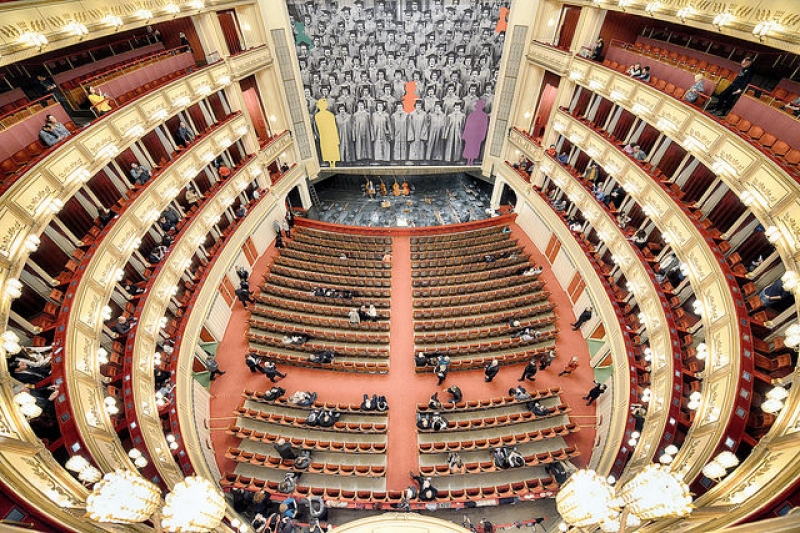
Image credit: Yuan
Best of all, a ticket at the Staatsoper can be had for a mere €3 (~S$5)! Although obtaining these standing room tickets involve somewhat complex instructions and a bit of patience, they offer great views of the stage with personal subtitle screens at the standing booths. While on intermission, feel free to roam the grand Staatsoper complex, and then promptly return to round off your night with some Mozart or Verdi.
8. Culture buff or not, there’s a museum for everyone in Vienna
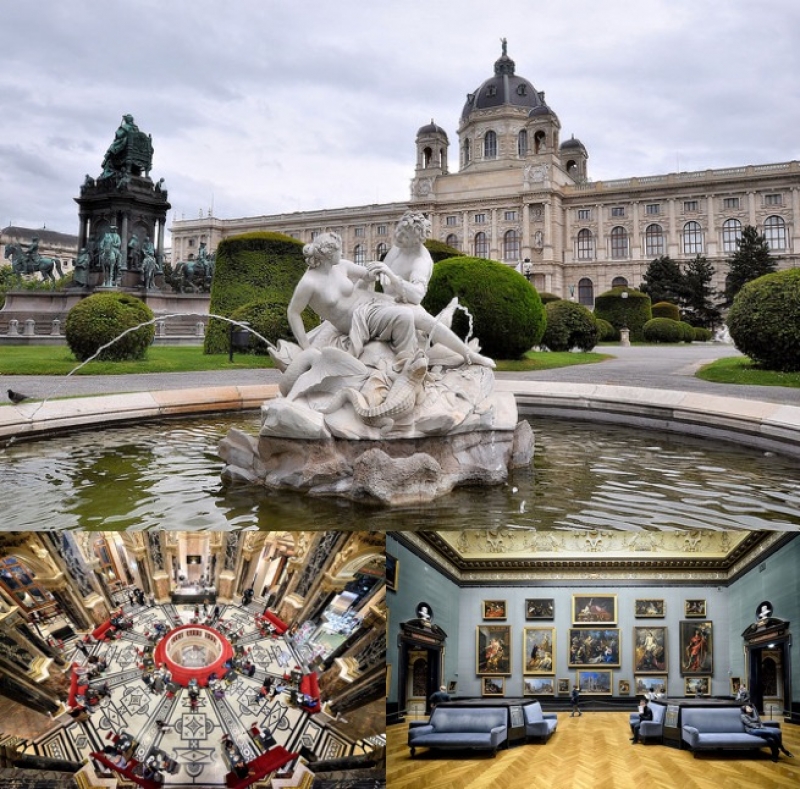
Image credit: Herbert Frank (top), Yuan (bottom left), Yuan (bottom right)
A testament to the preservation of art and culture in Vienna, the city’s Innere Stadt is packed with countless museums housed in buildings which are art pieces in their own right. Nowhere is this more evident than in Maria-Theresien Platz. Even if museums fail to interest you, the Platz and its surrounds are a sight to behold, with fountains and topiaries flanked by the twin, regal facades of the Naturhistorisches Museum and the Kunsthistorisches Museum.
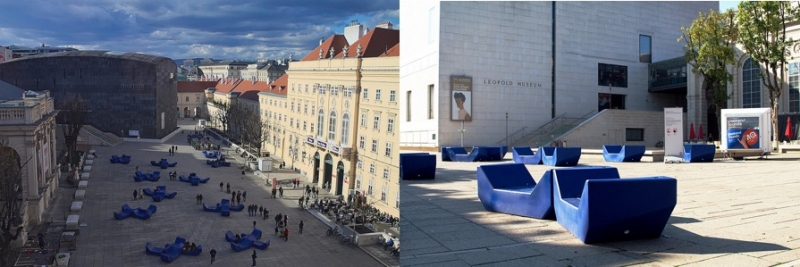
Image credit: Nicolas Vollmer (left), NKCPhoto (right)
Right across the street from the Platz is the hip and bustling Museumsquartier, a dedicated urban art complex exuding a postmodern ambience for all to enjoy. With play-areas, cafes, food trailers and large open spaces, the Quartier encourages weekend fun for everyone. A couple of hours are easily spent at the Leopold Museum and mumok; the former boasts the largest Egon Schiele collection in the world, while modern and contemporary art is to be found in the latter.
9. Christmases are truly magical in the Austrian capital
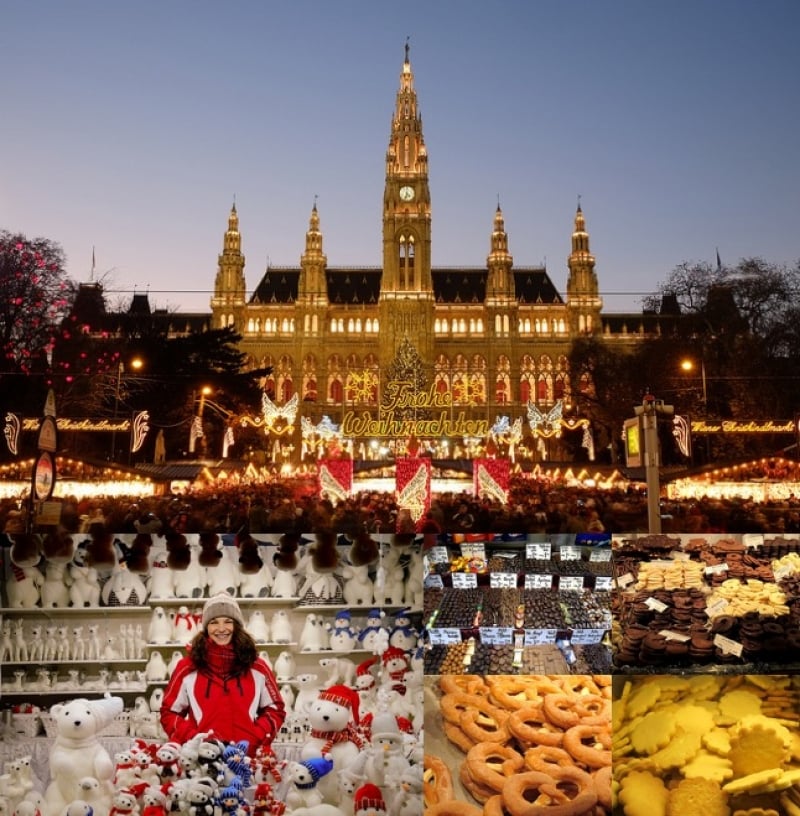
Image credit: Gabriel Hess (top), Ade Russell (bottom left), adrian, acediscovery (bottom right)
From hand-made ornaments and baubles to warm eggnog spiced with cinnamon and cloves, the annual Christkindlmarkt boasts a long folk tradition that dates back to the Middle Ages. While there are many Christmas markets held about town, the one celebrated at the Rathausplatz, or in front of the City Hall, is perhaps the most festive and magical (above). Now that’s something to warm even the coldest of hearts (and hands!).
10. Slovakia is just an hour away!
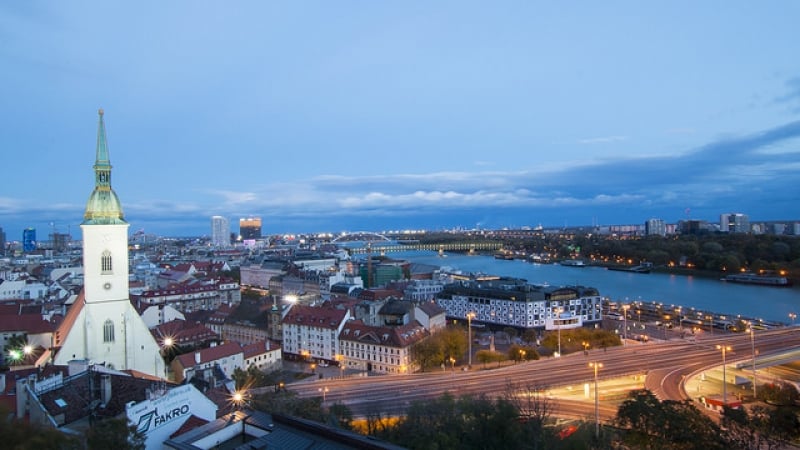
Image credit: Hans Permana
Surrounded by big Eastern European travel destinations, Bratislava is often overlooked. Yet, being only 55 km away from Vienna, the Slovakian capital makes for a quick and easy day trip from Austria.
While the two cities are some of the closest capitals in the world, they cannot be more different: Bratislava juxtaposes the medieval atmosphere of its old town against the austere, Soviet architecture of its largest borough, Petržalka, making the city a sobering change from Vienna’s sometimes overwrought, fairytale-like sensibilities.
Glutted on music and confectionery? Switch things up with a trip to Bratislava through Vienna’s Hauptbahnhof. The quickest train journeys will have you in Slovakia within an hour.
All things considered, Vienna weaves a pleasant melody on its own. With fun activities to be had in summer and remaining effortlessly charming even through winter, this Austrian song will provide you with some all-season listening indeed!





